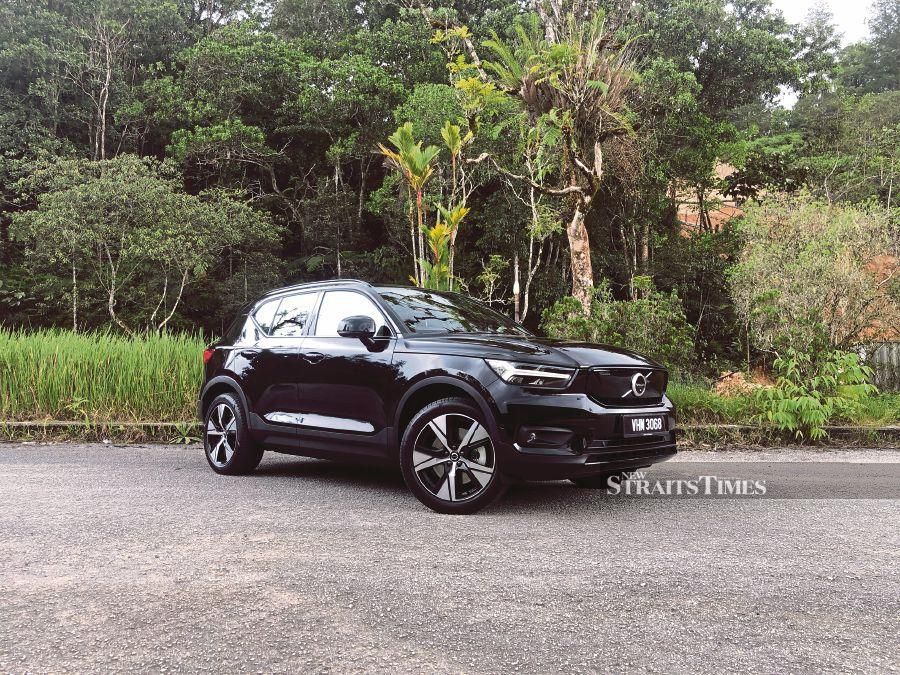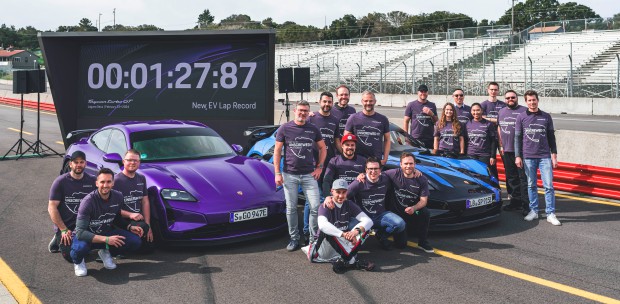RECENTLY, Cars, Bikes and Trucks got to drive the Volvo XC40 Recharge Pure Electric P8, one of the most exciting cars to launch this year.
Yes, that's a long name. So, let's just call it the Volvo XC40 Recharge EV for this review.
It was a brief one-day test drive but there were plenty of takeaways.
FACTS AND FIGURES
The XC40 Recharge EV is the latest addition to Volvo's lineup that comprises the XC40 T5 (petrol only) and the XC40 Recharge T5 (petrol plug-in hybrid).
The car is priced at RM262,459.75 with a five-year warranty and roadside assistance, along with an eight-year battery warranty.
The XC40 Recharge EV is also locally-assembled, effectively making it the first complete knocked-down EV in Malaysia.
Powering the stylish sport utility vehicle is a 78kWh lithium-ion battery that channels its juice to two electric motors - one for each axle - with a total system output of 402hp (300kW) and 660Nm of torque.
This allows the XC40 Recharge EV to sprint from zero to 100kph in just 4.9 seconds. As for the top speed, in true Volvo fashion, it is capped at 180kph.
Design-wise, it looks similar to the other variants, which is great as I don't think the car has to be too quirky, unless it is a model that's designed specifically to be an electric vehicle (EV) like the Porsche Taycan or Hyundai Ioniq 5.
There are, however, minor differentiations to the XC40 Recharge EV compared to its petrol-powered variants, such as the covered front grille, "Recharge" script on the C-pillars and charging door on the left front fender.
Otherwise, the car is pretty much identical with the "Thor's Hammer" LED daytime-running lights, LED headlights and tail lights, 19-inch wheels (but the EV gets Pirelli P Zero Elect tyres), and gloss black roof rails.
The interior is also familiar, with a similar dashboard construction as the XC40.
The 12.3-inch digital instrument cluster, though, is specific to the EV with model-specific displays and to me, it has nicer graphics compared to the regular XC40.
The infotainment display is built with Android Automotive OS and built-in Google Maps, Google Assistant and Google Play Store.
FAMILIAR BUT DIFFERENT
Now, how did the XC40 Recharge EV drive?
Yes, the interface might be familiar in the cabin but for one, there was no engine start button.
The moment you stepped into the car - with the key - the XC40 Recharge EV was alive and waiting for you to shift into Drive. There was no need for a "warm up" whatsoever.
Meanwhile, we drove from The Saujana in Subang into the North Klang Valley Express highway towards Janda Baik and I must say it was manageable and not too overwhelming.
Power was definitely there, snappy and instantaneous as there was no need to wait for a certain rpm range to get the most out of it.
Maximum torque was available at almost any time and the magic here was how easy Volvo made it to modulate.
Vibration was something all drivers were accustomed to but it was next to nothing in the XC40 Recharge EV. The NVH (noise, vibration, harshness) levels were one level better, allowing for more refined driving.
As far as weight was concerned, with the lithium-based battery stored underneath the cabin floor, the car was up to 440kg heavier than the petrol-only T5.
This meant that despite tremendous reduction in engine (or powertrain) maintenance compared to the T5, the heavier EV XC40 had an accelerated rate of wear and tear of rubber elements on the suspension components, especially the tyres.
ONE-PEDAL DRIVE
One interesting thing about an electric car is the ability to perform one-pedal driving.
Depending on the setting, the regenerative function from the electric motor will help slow the car down, thus minimising the need to actually use the brake pedal.
With the XC40 though, the regen effect is the most prominent and strongest that I have ever experienced in any EV, to a point where you barely need to use the brake.
For going downhill Genting from Janda Baik, I think I actually used the brake pedal less than five times!
How is that possible?
So, the one-pedal mode is active by default in the XC40 (you can turn it off if you want to) and from certain speeds, for instance 90kph, you don't need to fully lift your right foot off the throttle pedal if you wish to slow down.
What you do is lift the pedal maybe a quarter and this is enough to slow the car down progressively - with the brake lights light up.
Lifting the pedal fully will result in the car slowing down quite abruptly, strong enough to exit a main road and turn into a junction.
So you modulate your "braking" force by adjusting your throttle pedal input, if that makes any sense.
It is a pretty interesting experience, although some media members don't like it. I myself prefer it, maybe because I drive a manual transmission car and am more comfortable having the effect similar to engine braking.
Range anxiety?
Now let's not deny that with a fully electric car, we tend to worry about things such as available driving range or charging spots, especially if we are traveling outside of our daily commute.
Such a feeling is more commonly referred to as range anxiety.
However, the Volvo XC40 Recharge EV offers an impressive driving range of up to 418km.
During our drive, despite not driving conservatively, we still managed to return to The Saujana with more than 40 per cent of the juice left.
The Google Maps integration with the infotainment system enables the car to display not only the location of EV chargers but also the estimated battery percentage left when you have arrived at the location set in the navigation system.
This is definitely a function that we can all appreciate.
VERDICT
Will I buy one? I always loved the XC40 and if I am in the market to buy one, I would be more inclined towards this EV variant than I ever was.
I think the Volvo XC40 Recharge EV has made electric car ownership to be more reasonable and practical as long as you have a DC fast charger at your place.



























